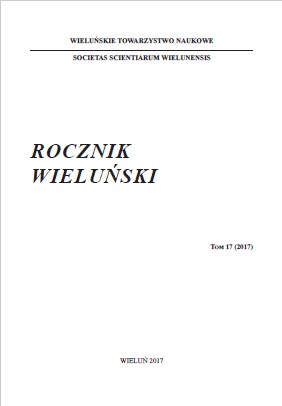Położenie chłopów w majątku rudniki w XIX w. (w świetle inwentarza dóbr z roku 1830, tabel prestacyjnych i likwidacyjnych) cz. 2
Feudal obligations of peasants in Rudniki estate in the 19th century in the light of the estate inventory from 1830, service and liquidation tables
Author(s): Alicja KisałaSubject(s): Economic history, Local History / Microhistory, Social history, Culture and social structure , 19th Century, Socio-Economic Research
Published by: Wieluńskie Towarzystwo Naukowe
Keywords: XIX century; Poland; feudal obligations; land ownership structure; the Rudniki estate;
Summary/Abstract: The article describes the financial situation of peasants who lived on the Rudniki estate in the first half of the nineteenth century. In the early days of the Kingdom of Poland the nobility owned ¾ of all the villages and farms across the country. The peasant farm size reduction in order to expand noble farms resulted in a deterioration of the economic situation of the peasants and a growing number of landless farmers. Although the Constitution of the Duchy of Warsaw provided personal freedom and equality before the law, the nobility still owned most of the land. At the beginning of the nineteenth century the Rudniki estate in the Wieluń County belonged to the Masłowski Family. An inventory report written in 1830 describes that their property consisted of Rudniki, Kuźnica, Młyny and Jawor villages, Buciny and Dalachów colonies as well as Faustyanka and Błonie noble farms. Besides serfdom, peasants were obliged to pay tribute in kind depending on their farm sizes. A few years later these goods passed into the hands of Henryk Miączyński of Suchekomnaty coat of arms brougth as a dowry by Masłowska.
Journal: Rocznik Wieluński
- Issue Year: 17/2017
- Issue No: 17
- Page Range: 147-163
- Page Count: 17
- Language: Polish

